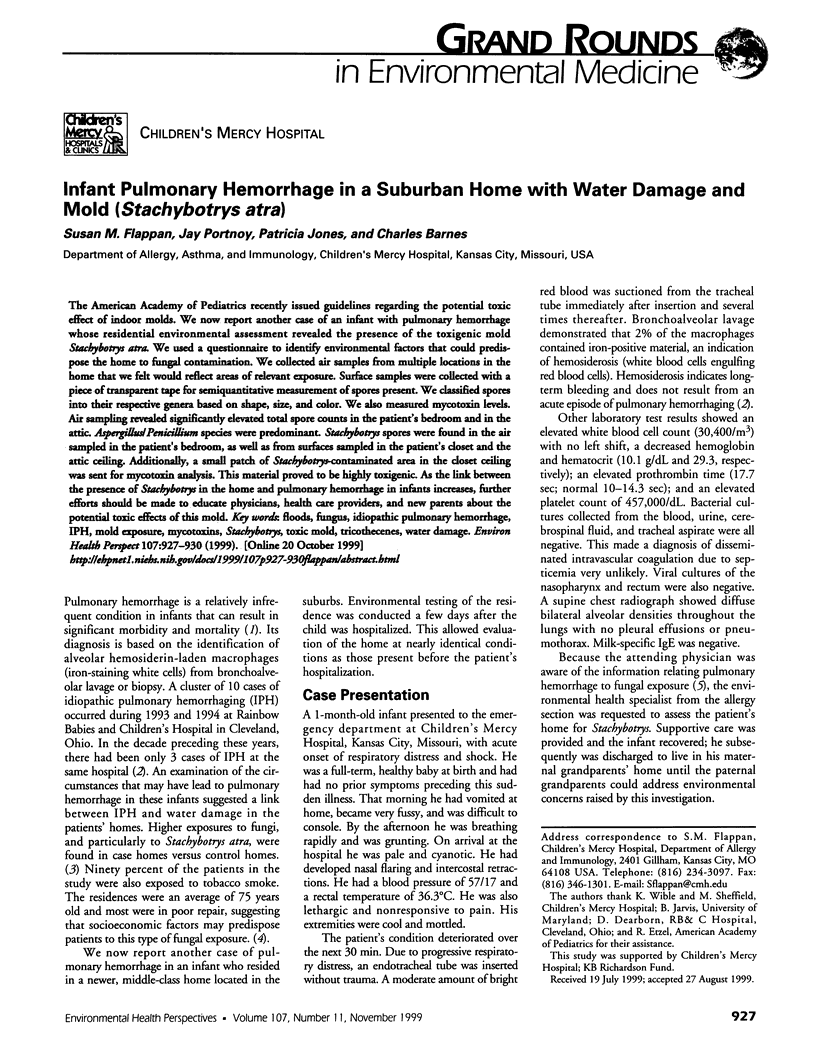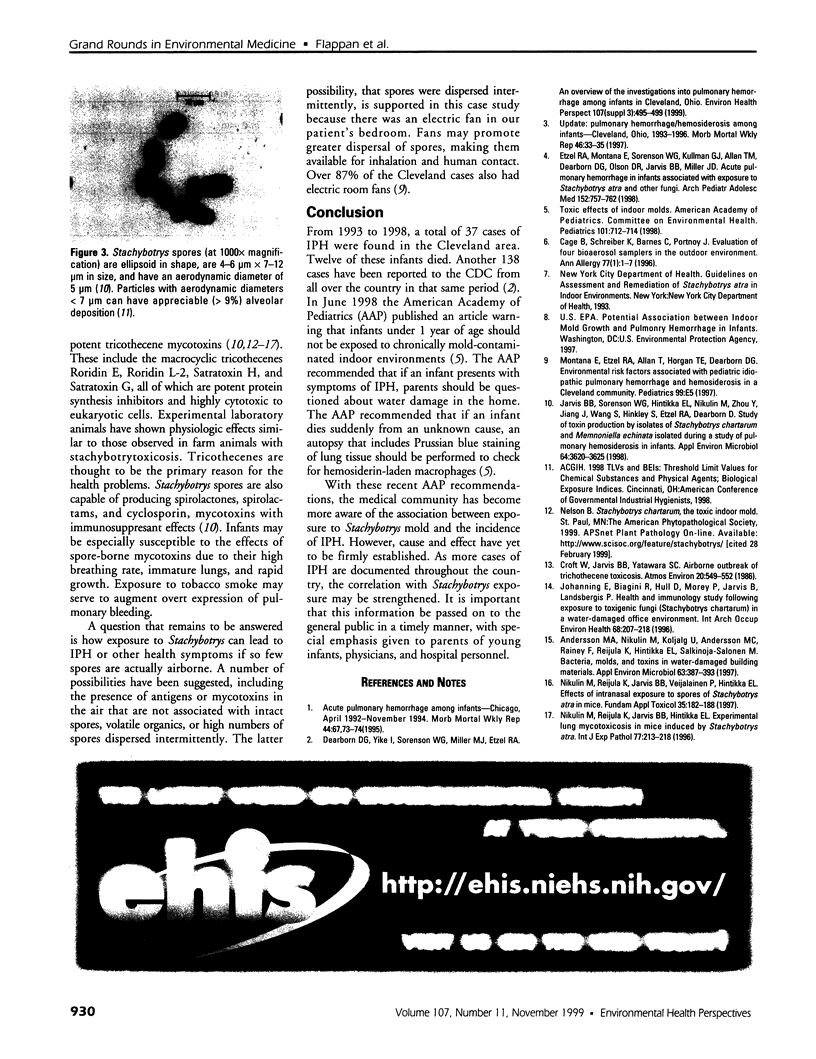Abstract
The American Academy of Pediatrics recently issued guidelines regarding the potential toxic effect of indoor molds. We now report another case of an infant with pulmonary hemorrhage whose residential environmental assessment revealed the presence of the toxigenic mold Stachybotrys atra. We used a questionnaire to identify environmental factors that could predispose the home to fungal contamination. We collected air samples from multiple locations in the home that we felt would reflect areas of relevant exposure. Surface samples were collected with a piece of transparent tape for semiquantitative measurement of spores present. We classified spores into their respective genera based on shape, size, and color. We also measured mycotoxin levels. Air sampling revealed significantly elevated total spore counts in the patient's bedroom and in the attic. Aspergillus/Penicillium species were predominant. Stachybotrys spores were found in the air sampled in the patient's bedroom, as well as from surfaces sampled in the patient's closet and the attic ceiling. Additionally, a small patch of Stachybotrys-contaminated area in the closet ceiling was sent for mycotoxin analysis. This material proved to be highly toxigenic. As the link between the presence of Stachybotrys in the home and pulmonary hemorrhage in infants increases, further efforts should be made to educate physicians, health care providers, and new parents about the potential toxic effects of this mold.
Full text
PDF



Images in this article
Selected References
These references are in PubMed. This may not be the complete list of references from this article.
- Andersson M. A., Nikulin M., Köljalg U., Andersson M. C., Rainey F., Reijula K., Hintikka E. L., Salkinoja-Salonen M. Bacteria, molds, and toxins in water-damaged building materials. Appl Environ Microbiol. 1997 Feb;63(2):387–393. doi: 10.1128/aem.63.2.387-393.1997. [DOI] [PMC free article] [PubMed] [Google Scholar]
- Dearborn D. G., Yike I., Sorenson W. G., Miller M. J., Etzel R. A. Overview of investigations into pulmonary hemorrhage among infants in Cleveland, Ohio. Environ Health Perspect. 1999 Jun;107 (Suppl 3):495–499. doi: 10.1289/ehp.99107s3495. [DOI] [PMC free article] [PubMed] [Google Scholar]
- Etzel R. A., Montaña E., Sorenson W. G., Kullman G. J., Allan T. M., Dearborn D. G., Olson D. R., Jarvis B. B., Miller J. D. Acute pulmonary hemorrhage in infants associated with exposure to Stachybotrys atra and other fungi. Arch Pediatr Adolesc Med. 1998 Aug;152(8):757–762. doi: 10.1001/archpedi.152.8.757. [DOI] [PubMed] [Google Scholar]
- Jarvis B. B., Sorenson W. G., Hintikka E. L., Nikulin M., Zhou Y., Jiang J., Wang S., Hinkley S., Etzel R. A., Dearborn D. Study of toxin production by isolates of Stachybotrys chartarum and Memnoniella echinata isolated during a study of pulmonary hemosiderosis in infants. Appl Environ Microbiol. 1998 Oct;64(10):3620–3625. doi: 10.1128/aem.64.10.3620-3625.1998. [DOI] [PMC free article] [PubMed] [Google Scholar]
- Johanning E., Biagini R., Hull D., Morey P., Jarvis B., Landsbergis P. Health and immunology study following exposure to toxigenic fungi (Stachybotrys chartarum) in a water-damaged office environment. Int Arch Occup Environ Health. 1996;68(4):207–218. doi: 10.1007/BF00381430. [DOI] [PubMed] [Google Scholar]
- Nikulin M., Reijula K., Jarvis B. B., Hintikka E. L. Experimental lung mycotoxicosis in mice induced by Stachybotrys atra. Int J Exp Pathol. 1996 Oct;77(5):213–218. doi: 10.1046/j.1365-2613.1996.9250323.x. [DOI] [PMC free article] [PubMed] [Google Scholar]
- Nikulin M., Reijula K., Jarvis B. B., Veijalainen P., Hintikka E. L. Effects of intranasal exposure to spores of Stachybotrys atra in mice. Fundam Appl Toxicol. 1997 Feb;35(2):182–188. [PubMed] [Google Scholar]





